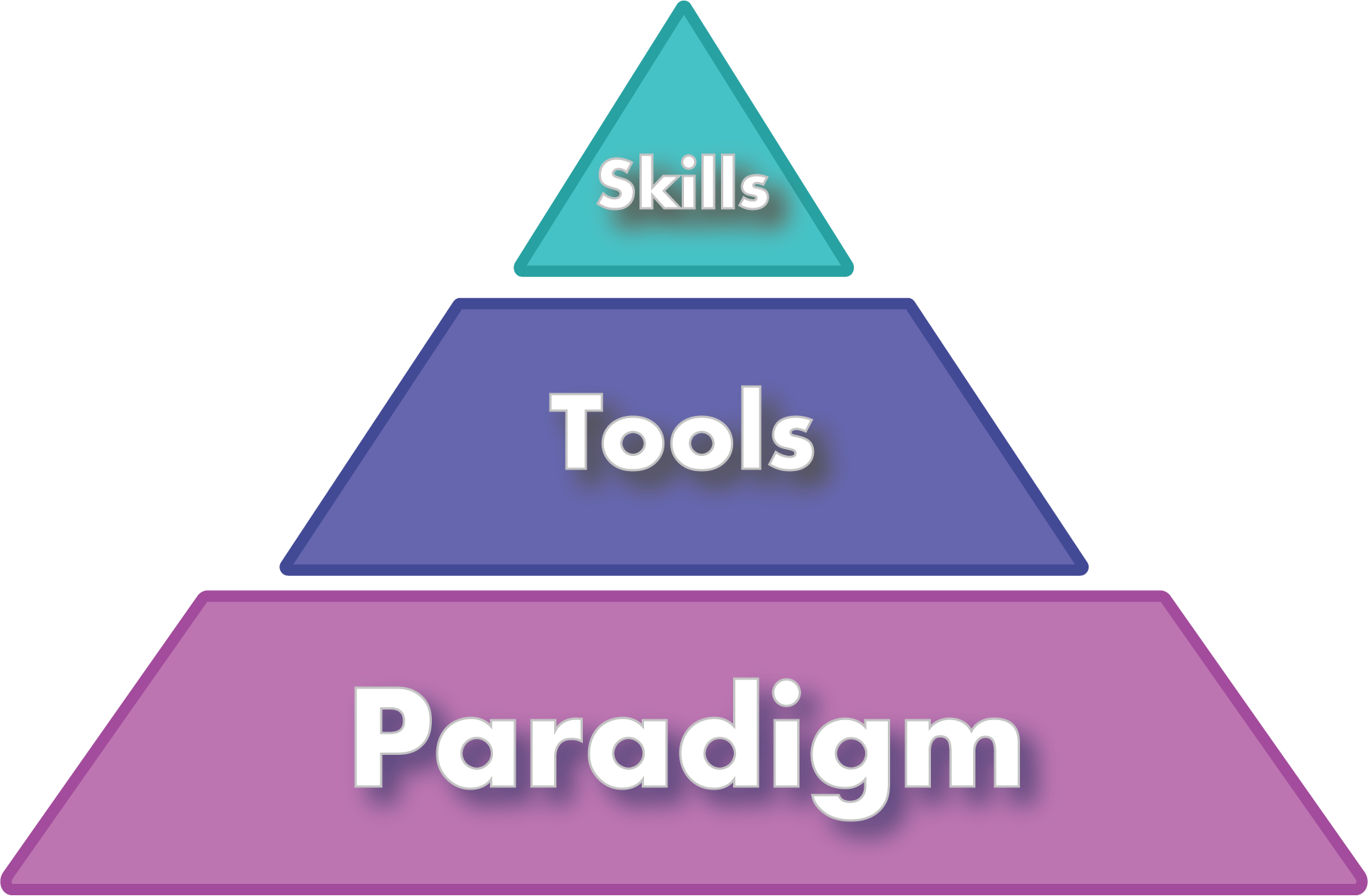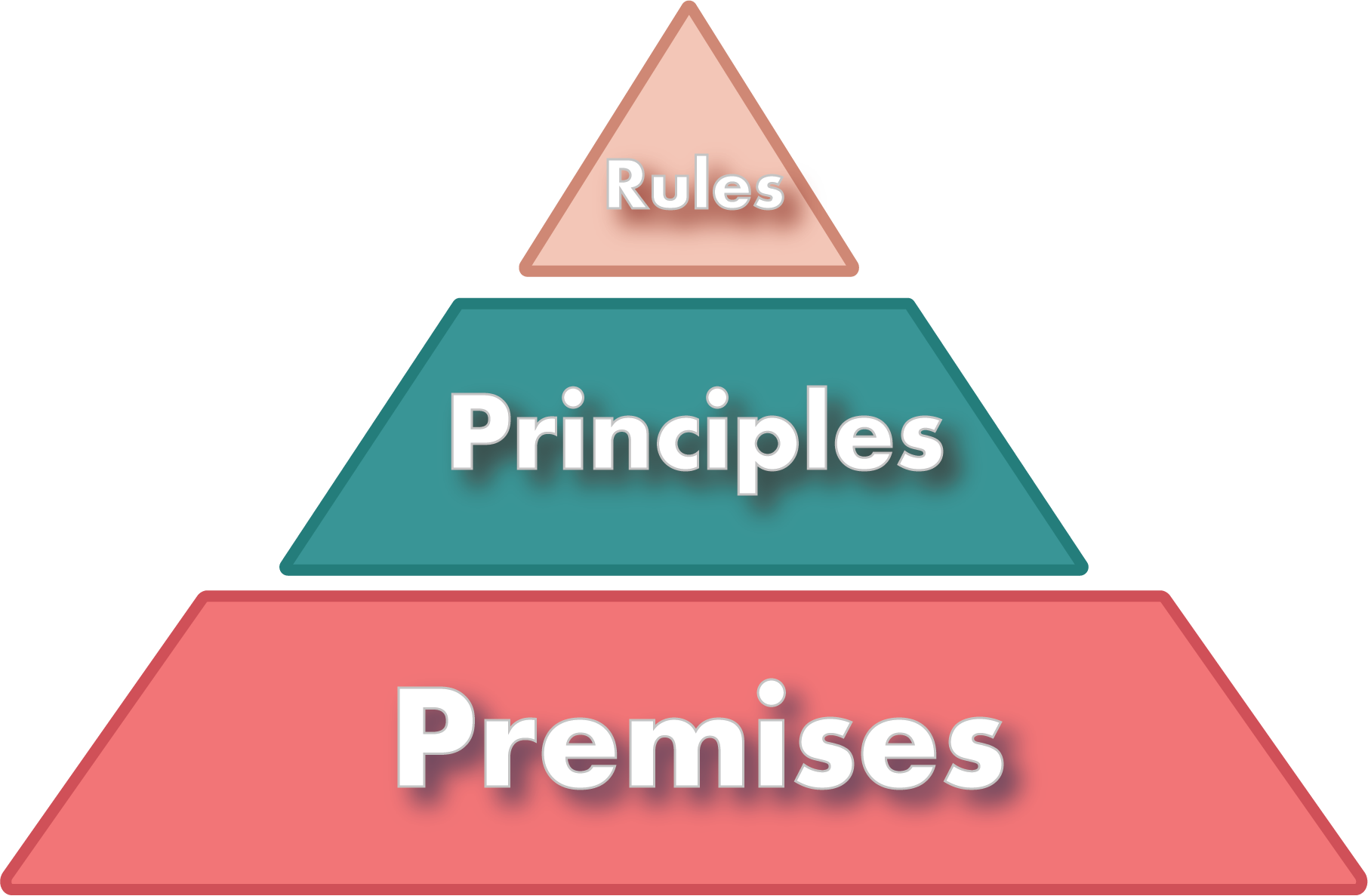Matrix Management Wiki
Home » Introduction » 1A. What is a Management Technology?
- 1A1. A technology is the practical application of a field of knowledge within a particular area. The field of knowledge can be very broad, encompassing a variety of technologies, or it can be very narrow and specific.
- 1A1i. An example of a broad technology would be cellular telephony.
- 1A1ii. An example of a narrow technology would be SIM card technology.
- 1A1iii. The technology for managing/leading an organization is very broad and includes narrow technologies such as those delineated within the five SPARC Keys. (See Section 1J for an introduction to the SPARC Keys.)
- 1A2. A technology is composed of three levels:
- 1A2i. The bottom level is the paradigm, a system of belief.
- 1A2ia. A paradigm is the knowledge upon which a technology is based. In hard technologies, the paradigm level is the science of the technology. In soft technologies, of which management technology is one, the paradigm level may be composed of theories from the social or behavioral sciences as well as beliefs not based on science, such as those that constitute “common sense.”
- 1A2ii. The middle level is tools, the means by which the knowledge is applied.
- 1A2iii. The top level is skills, how the tools are used.
- 1A2iv. Figure 1.1. Diagram of the three levels of a management technology.

- 1A3. Management technology is the practical application of organizational and leadership knowledge for running an organization.
- 1A3i. Management technology encompasses the concepts of both managing an organization and leading a team.
- 1A4. There are old, obsolete management technologies and modern, cutting edge management technologies.
- 1A4i. The old management technology is based on an obsolete paradigm, and the new management technology is based on the most up-to-date paradigm for running an organization.
- 1A5. A paradigm can also be broken down into three tiers.
- 1A5i. Figure 1.2. Diagram of the three tiers of a paradigm.

- 1A5ii. The bottom level is premises, assumptions about what is believed to be true.
- 1A5iii. The middle level is principles, the broad-based guiding beliefs.
- 1A5iv. The lower level is rules, the specifics about how to operate within a paradigm.
- 1A5v. Example: the paradigm of a democracy
- 1A5va. A premise in democracy is that all men are created equal and are endowed by their creator with certain inalienable rights.
- 1A5vb. A principle of democracy is that inalienable rights include life, liberty, and the pursuit of happiness.
- 1A5vc. A rule in democracy is that all citizens over the age of 18 have the right to vote.
- 1A5vi. Principles and rules can be difficult to differentiate. Principles are broad-based beliefs, and rules are more specific guides to behavior. In this Body of Knowledge, principles and rules are generally treated the same.
- 1A6. A paradigm shifts when the premises change, and new principles and rules are established.
- 1A7. The old management technology for running an organization is based on an obsolete paradigm.
- 1A7i. It is obsolete because the premises are no longer true. Therefore, a new paradigm is needed.
- 1A8. Management technology is used to create an organizational operating system.
- 1A8i. An organizational operating system (OS) is a system consisting of:
- 1A8ia. Principles and rules
- 1A8ib. Organizational management systems
- 1A8ic. Leadership skills, tools, and techniques
- 1A8ii. An OS uses specific management technologies which in turn are based on specific paradigms.
- 1A8iii. An OS does not include the technologies needed to operate the business, e.g., a specific product or process technology.
- 1A9. Three primary operating systems that are available for running an organization today include the Vertical Management 1.0 OS, its hybrid Matrix Management 1.0, and the Matrix Management 2.0 OS.
- 1A9i. The Vertical Management 1.0 OS is also referred to as the VM 1.0 OS, or just VM 1.0.
- 1A9ii. VM 1.0 is based on an old paradigm and is obsolete. It is an OS that uses only one dimension for running an organization—the vertical one.
- 1A9iii. Matrix Management 1.0, or MM 1.0, is based on the same paradigm as VM 1.0 and is also obsolete.
- 1A9iv. The Matrix Management 2.0 OS is based on a new paradigm. It is also referred to as the MM 2.0 OS or just MM 2.0.
- 1A9v. MM 2.0 is a two-dimensional OS. It operates in the horizontal and vertical dimensions of an organization.
- 1A10. The shift from VM 1.0 or MM 1.0 to MM 2.0 is a shift to a new paradigm. It is a reinvention of how an organization is run, whether that organization operates in the profit, nonprofit, or governmental sector.
- 1A11. Shifting to a new OS requires dismantling the systems that support the old OS and then building new systems to support the new OS. This is a significant transformational endeavor.
- 1A12. The most common symptoms of the VM 1.0/MM 1.0 OS include:
- 1A12i. Frequent reorganization in an attempt to resolve problems
- 1A12ii. Difficulty working cross-functionally
- 1A12iii. A lack of alignment between functions
- 1A12iv. Blame and finger-pointing
- 1A12v. Over-committed resources
- 1A12vi. Too many initiatives/projects
- 1A12vii. Late or over budget projects
- 1A12viii. A lack of alignment to the external customers
- 1A12ix. A lack of ownership of cross-functional processes
- 1A12x. Inefficient business processes
- 1A12xi. Empire building
- 1A12xii. Resource hoarding
- 1A12xiii. A lack of accountability
- 1A12xiv. Results driven by power, authority, who you know, and personal relationships
- 1A12xv. Work is “thrown over the wall” due to a culture of “not my area”
- 1A12xvi. A lack of focus on organizational goals in favor of achieving individual goals
- 1A12xvii. Leaders are unclear about their roles and responsibilities
- 1A12xviii. Leaders struggle to work without authority


